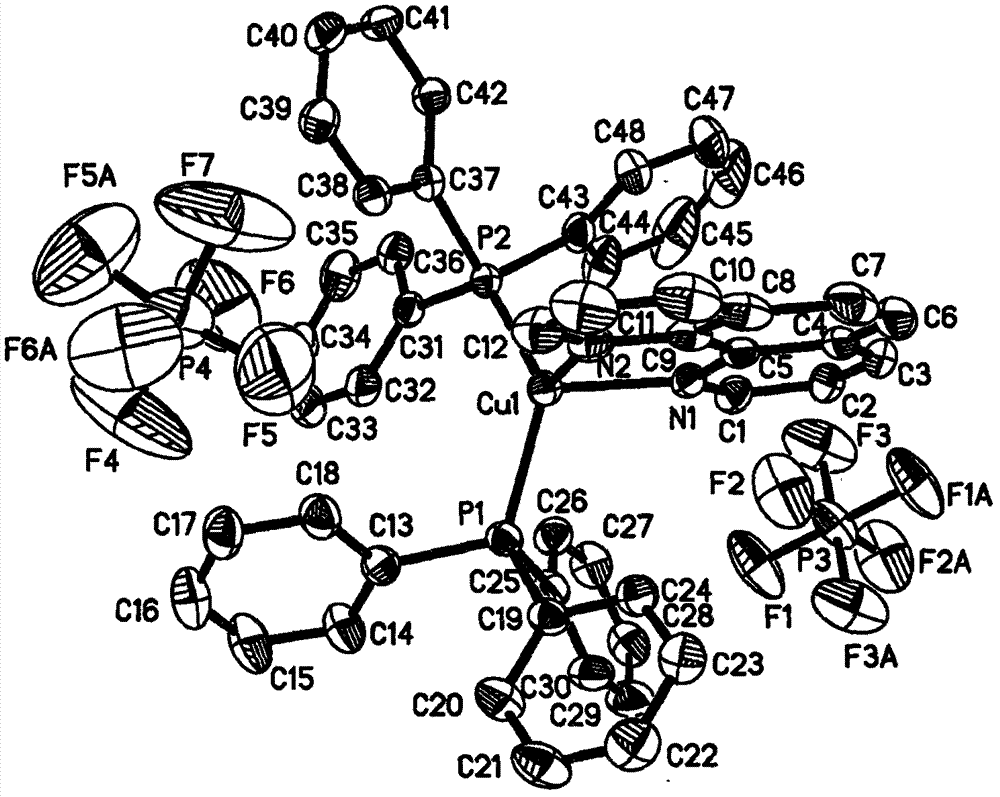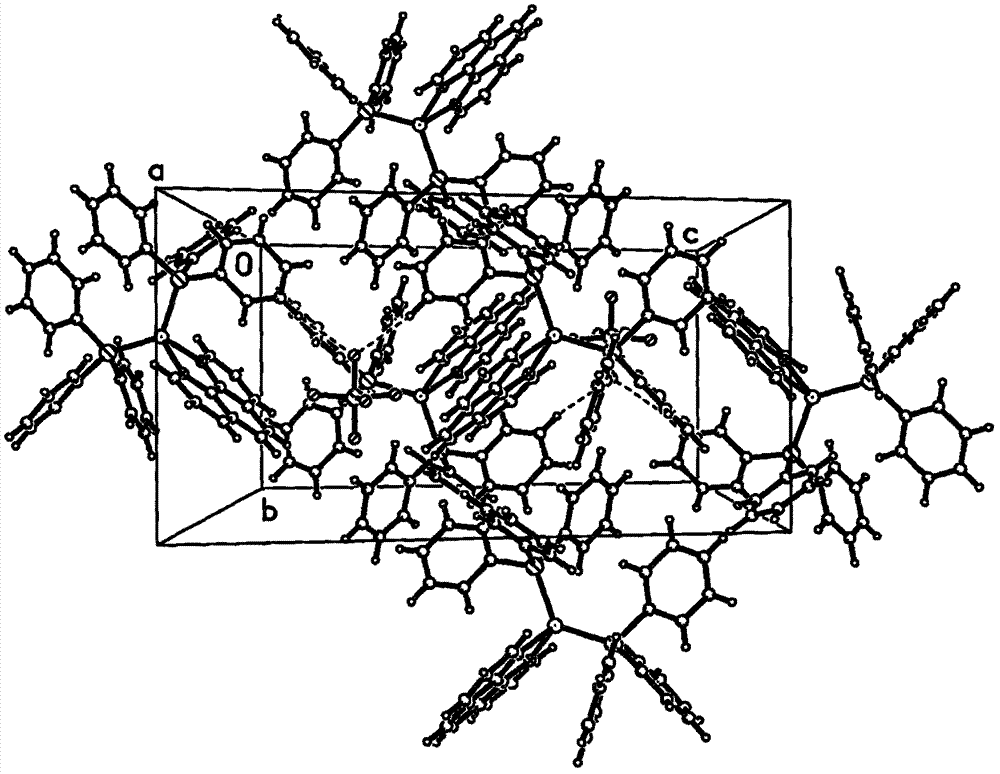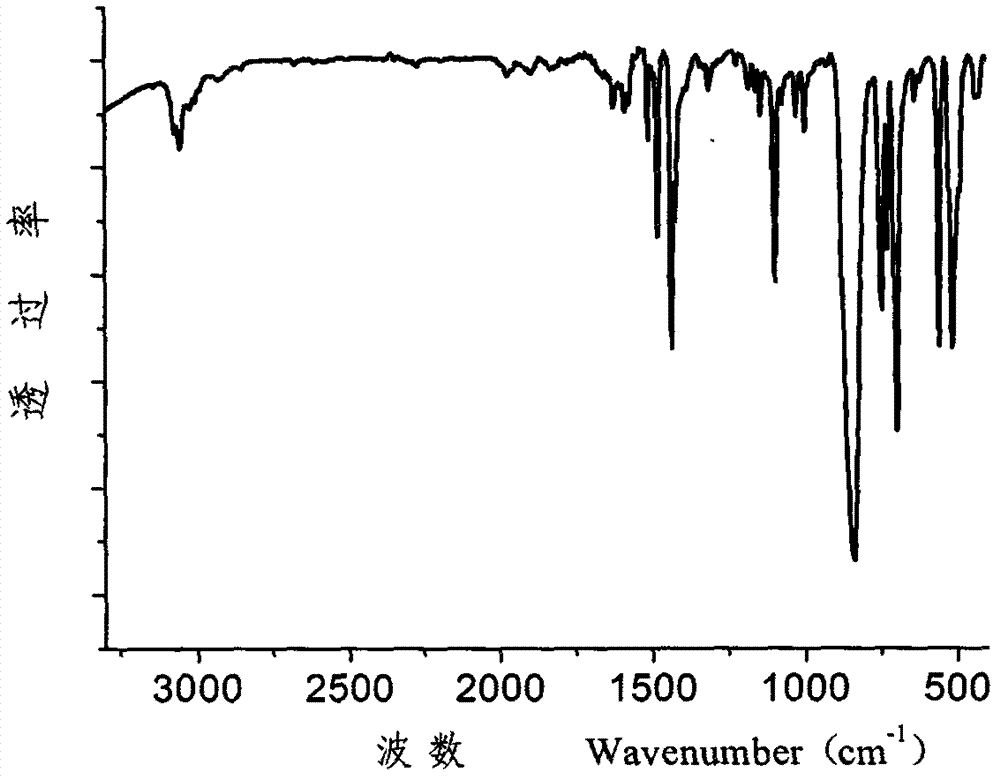Phenanthroline ligand-containing tetrahedral cuprous complex luminescent material in crystal form
A technology of luminescent materials and complexes, which is applied in the direction of luminescent materials, copper organic compounds, electric solid devices, etc., can solve the problems of low luminous brightness and achieve the effects of simple and easy-to-obtain raw materials, suppress non-radiative attenuation, and low production costs
- Summary
- Abstract
- Description
- Claims
- Application Information
AI Technical Summary
Problems solved by technology
Method used
Image
Examples
Embodiment 1
[0033] A large amount of Cu(Phen)(PPh 3 ) 2 (PF 6 ) crystal sample preparation: first weigh 373mg Cu(CH 3 EN) 4 PF 6 Dissolve in 7mL acetonitrile, then weigh 198mg of Phen and 525mg of PPh 3 The ligands were dissolved together in 10 mL of dichloromethane (the molar ratio of the three reactants was 1:1:2), these two solutions were mixed, and stirred to make it fully take place in the coordination reaction, and finally the obtained yellow The solution was filtered, and isopropanol was added, and all the solvent was quickly removed by rotary evaporation, and vacuum-dried to obtain a light yellow crystal powder as the product, with a yield of 95% (calculated as Cu).
Embodiment 2
[0035] Synthesis of Cu(I) Complex Cu(Phen)(PPh 3 ) 2 (PF 6 ) single crystal: first weigh 37mg Cu(CH 3 EN) 4 PF 6 Dissolve in 5mL acetonitrile, then weigh 20mg of Phen and 53mg of PPh 3 The ligands were dissolved together in 5 mL of dichloromethane, and the latter solution was added to the former solution at one time, stirred to make it fully reacted and filtered, and the solution was covered with n-hexane to promote the crystallization of the product, and a large number of light yellow crystals were precipitated after standing for several days. A light yellow strip crystal with a size of 0.32mm×0.30mm×0.13mm was selected for X-ray single crystal structure test. The molecular structure of the compound is shown in the attached figure 1 , and its unit cell packing structure is shown in the attached figure 2 .
[0036] For the complex Cu(Phen)(PPh 3 ) 2 (PF 6 ) of pure-phase crystal samples were subjected to a series of performance tests. The material crystal of the p...
PUM
 Login to View More
Login to View More Abstract
Description
Claims
Application Information
 Login to View More
Login to View More - R&D
- Intellectual Property
- Life Sciences
- Materials
- Tech Scout
- Unparalleled Data Quality
- Higher Quality Content
- 60% Fewer Hallucinations
Browse by: Latest US Patents, China's latest patents, Technical Efficacy Thesaurus, Application Domain, Technology Topic, Popular Technical Reports.
© 2025 PatSnap. All rights reserved.Legal|Privacy policy|Modern Slavery Act Transparency Statement|Sitemap|About US| Contact US: help@patsnap.com



